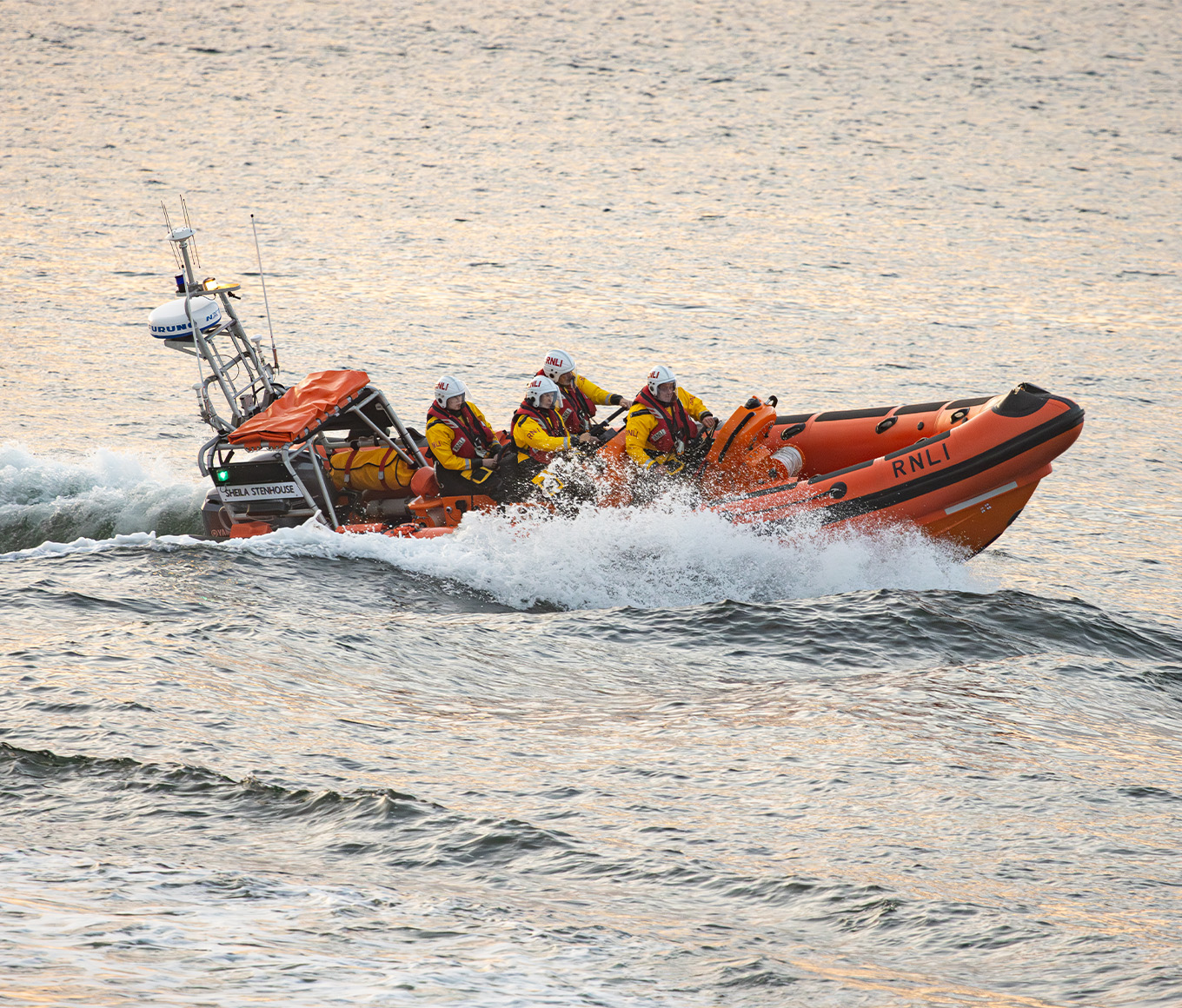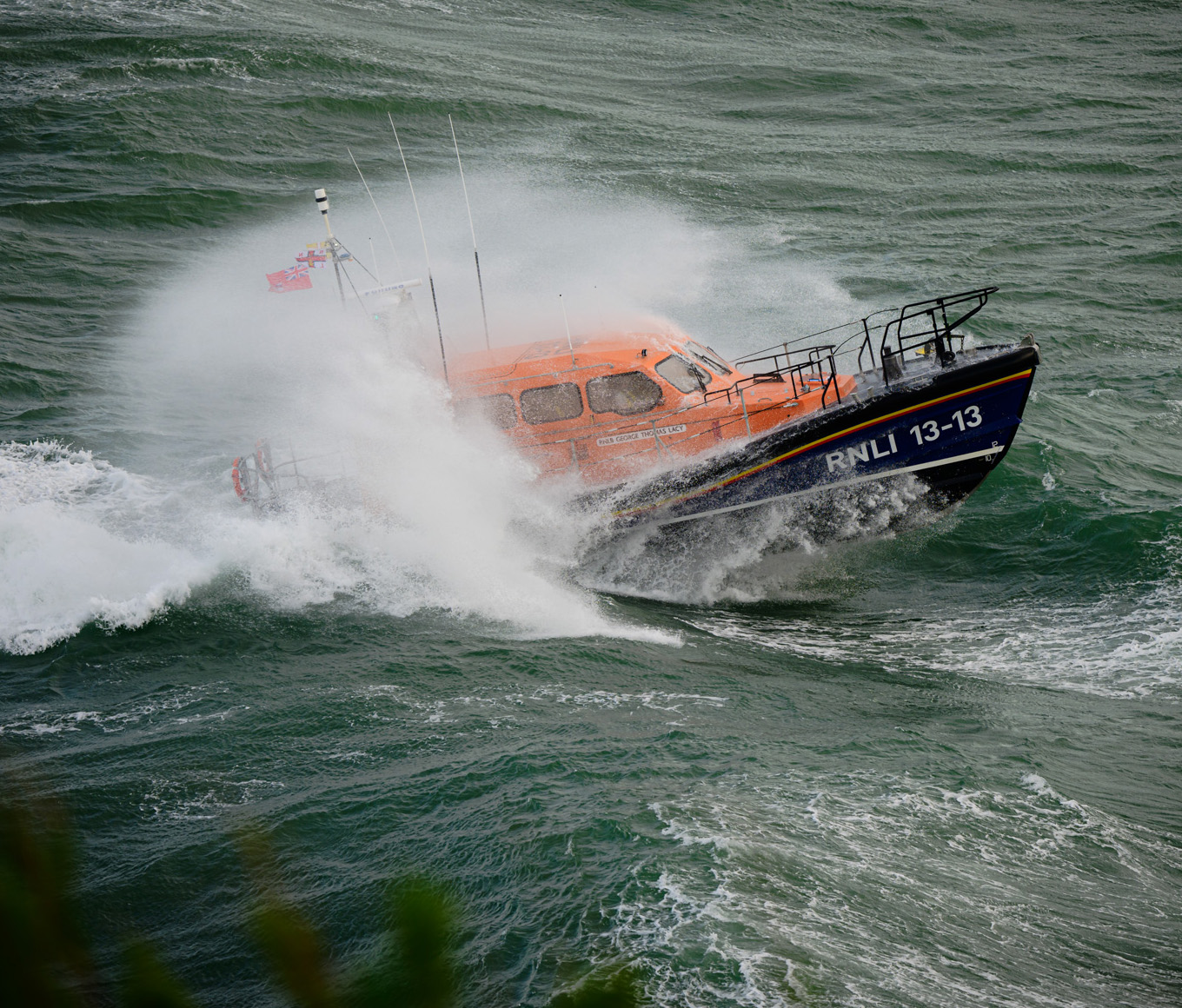
Saving Lives at Sea: Series 8 Episode 8
Discover more about the stories and stations featured in series 8 episode 8 of Saving Lives at Sea, with rescues from Wick, Mudeford, Fraserburgh, Walmer and Rhyl.
Our volunteer crews do everything they can to search for people in danger as quickly as possible – like the missing paddleboarder who was swept out to sea in this episode. Watch this video to hear Yvette Kershaw, Volunteer Crew Member, talk about the different types of search patterns that crews use onboard the lifeboat.
Wick: Blown out to sea
The episode began with the Wick crew searching for a missing paddleboarder who had headed out to sea at Reiss Beach earlier that morning.
It was a windy day, and the paddleboarder suddenly found herself drifting further away from the shore. When her husband realised that she couldn’t make her way back to the beach, he knew she was in trouble. He immediately raised the alarm and, swiftly after, the crew began their search. They were joined by a local fishing boat, Reaper, which had responded to the pan pan alert issued by Shetland Coastguard.
As a larger vessel, the fishermen had a better line of sight and quickly spotted the woman’s position. They alerted the Wick crew, and they headed straight to her rescue. After the crew pulled her onboard the lifeboat, they returned to Wick where she was relieved to be reunited with her family.
Mudeford: A close call
Next, we saw the Mudeford volunteers respond to a mayday call from a rigid inflatable boat (RIB) 5 miles east of the station. The RIB had almost capsized with three people onboard – so they were in serious trouble.
The crew launched their B class lifeboat into rough conditions, with winds blowing at gale force 8. After 5 minutes, they spotted the RIB straight ahead, thrashing around in turbulent waters. The RIB’s skipper had been trying to make it back to the harbour, but the conditions made it impossible to do so.
The crew decided that one of them should move over to the RIB. Once they had gained control of the RIB, they set off, with the lifeboat following closely behind. As they arrived back in the calm waters of Mudeford Quay, they all felt an immense sense of relief.
Fraserburgh: Fishing vessel on the rocks
The Fraserburgh crew launched after receiving a mayday call from a fishing trawler, the Ocean Maid, which had hit the rocks at Cairnbulg Point. The four fishermen had abandoned the boat for their liferaft and were dangerously close to the rocks.
Five minutes after launching, the Ocean Maid and the liferaft came into view. But with foggy skies, choppy waters, and rocks just below the surface, it was too risky for the Trent class lifeboat to get any closer.
To reach the men, two members of the Fraserburgh crew headed out in their small XP boat. When they were close enough, they towed the liferaft away from danger, then threw a heaving line from the Trent class lifeboat to the liferaft. Distressed but safe, the fishermen were brought onto the lifeboat and taken safely back to shore – leaving the Ocean Maid rolling on the rocks.
Walmer: Capsized catamaran
When a call came in after passersby spotted a capsized catamaran and two people in the water, the Walmer crew raced to the scene. The catamaran’s trapeze had broken, sending one of the sailors overboard. As they attempted recovery, an offshore wind and strong tide caused their boat to upturn.
When the Walmer volunteers arrived in their B class lifeboat, the two sailors had been in the water for around 25 minutes and were getting very cold. The crew acted fast, unhooking the sail from the top of the mast, and encouraging the sailors to pull down and retract the sail.
Thankfully, previous training with The Downs Sailing Club proved invaluable to the crew. This helped them to right the catamaran by pushing up the mast – with the two casualties still onboard. The wind quickly caught their front sail, and they set off on their way back to shore.
Rhyl: Yuletide log
As the Rhyl volunteers were about to tuck into Christmas Day lunch at home with their families, their pagers sounded. At 1.43pm, a call came in from a member of the public who had spotted a possible kayak in difficulty off Pensarn Beach, Abergele. Within 7 minutes, the volunteers had downed their cutlery, kitted up, raced to the station, and launched their inshore lifeboat.
When the crew arrived at the location, they didn’t find what they were expecting. Instead of a kayaker, the crew found a large part of a tree with a branch sticking out of the water, which looked like a hand. They were relieved that no one was in danger and were equally glad that the person had reported it – it’s always better to be safe than sorry.
They towed the tree trunk safely back to the beach and handed it over to the coastguards to prevent further calls. By 2.25pm, they were back at the station and, after preparing the lifeboat ready for its next tasking, went back to their festive celebrations.
You may also enjoy the following











